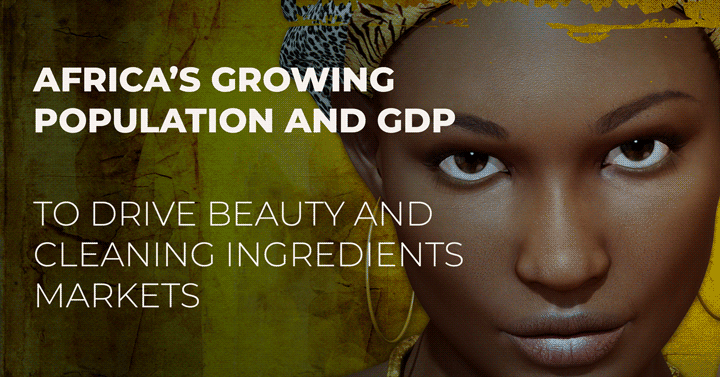Strong GDP and Population Growth
The market for personal care products in Africa is set to grow at a massive pace due to population increases. Already, the continent has the highest population growth in the world at a staggering 2.7% annually; if the trend persists, population is set to double by 2050, and Africa will be home to a quarter of the world’s population.
In addition, Africa’s overall GDP increase is broadening the market for personal care products as the African middle class grows.
The forecasts for both African GDP and population growth have piqued the interest of several global players. For example, BASF has established a laboratory in Nigeria to better study local personal care requirements; other brands/suppliers are following suit to appeal to the African consumer.
The suppliers of personal care ingredients are highly fragmented, with a large share going to Asian suppliers due to their presence through several traders and distributors.
Personal Care Ingredients Manufacturing and Consumption
The personal care industry in Africa has a distance to go before being considered mature. Manufacturing capabilities are still concentrated in economic powerhouses, such as South Africa, Nigeria, Algeria, and Kenya. South Africa is, by far, the most mature and stable market, with strong manufacturing capabilities. Apart from manufacturing activities, Nigeria is also a hub, mostly for commodities, covering a wide array of neighboring countries.
Personal care ingredients consumption in Africa is led by surfactants, as they are the building blocks of rinse-off skin care products. These are usually products that move in high volume and are relatively easy to manufacture and handle. Emollients follow in second place, being present in a wide array of skin care products and other categories in varying proportions.
Changing Consumers
Several African countries are witnessing major infrastructure additions that are increasing market interconnections, as well as population migration from rural areas to cities, boosting trade and economic activity. With the increase in infrastructure development, more African consumers are exposed to products offered by supermarkets and other retailers in urban centers, further broadening the consumer base for personal care products.
This economic growth is also increasing disposable incomes within African households, promoting expenditure on products previously considered non-essential.
Trends
There is a developing sense of ethnic pride driving demand for all products made in Africa.
Domestic brands make use of natural, homegrown ingredients in their formulations and tailor their product to suit locals. Clever marketing campaigns of these brands are capitalizing on the fact that global brands do not consider the different needs of African skin.
There is also an affinity toward more natural and traditional products and ones that specifically target local, ethnic personal care needs among African consumers. This takes on a special importance in African countries, where several so-called “super ingredients,” such as argan oil and shea butter, are endemic. These ingredients are considered traditional, and products based on these ingredients are witnessing increased demand growth.
Several local beauty brands, including Suzie Beauty in Kenya, House of Tara in Nigeria, and Milani and Zaron Cosmetics in South Africa, made their entry into the African market in recent years. These brands span the continent, and although some rely on imports, others do the manufacturing in their country.
To get deeper insights into the African HI&I and PCI markets, subscribe to Kline’s recently published studies: Ingredients for Household, Industrial and Institutional Cleaning Application: Africa Market Analysis and Personal Care Ingredients: Africa Market Analysis.

